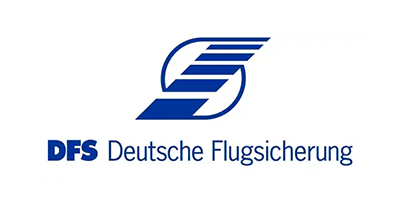DFS Deutsche Flugsicherung GmbH
External Reporting on the Ascent – Financial Planning at Deutsche Flugsicherung
Whether on a business trip or annual leave, for a city break or visiting relatives, thanks to air transport, people are more mobile today than they have ever been before. When it comes to getting them to their destinations safely and on time, DFS Deutsche Flugsicherung GmbH (German Air Navigation Services), as a major partner in air traffic, plays an extremely important part. When monitoring and planning its own terrestrial financial data, DFS counts on an integrated financial planning model.
DFS Deutsche Flugsicherung GmbH, being a company constituted under German civil law that is wholly owned by the German government, presents its annual accounts in accordance with the German Commercial Code (HGB) as well as the International Financial Reporting Standards (IFRS). With the consequences of the German Accounting Law Modernisation Act (BilMoG) in mind, which took effect in 2009, this reporting variant needed to be included in the financial plan too.
Faced with this requirement, Michael Stippler, whose external reporting responsibilities include preparing the annual financial statements, introduced the planning tool Corporate Planner with the integrated financial planning (IFP) model at the company. This model enables an integrated profit, balance sheet, finance and cash flow plan to be produced by linking together the profit and loss account, the financial plan and the budgeted balance sheet. The planning model takes account of the dynamic interdependencies between the sections so that a self-contained system develops.
Working together with CP Corporate Planning AG, Michael Stippler built three structures in the financial planning software, one for each of the required accounting formats. “In this way, we can draw up an integrated balance sheet and P&L plan connected with a cash flow plan, which is internally consistent, in both German Commercial Code and IFRS format at the same time,” Michael Stippler describes the intended benefit of this planning method.
The actual business figures in the back-office system, SAP R/3 Enterprise, are imported to the Corporate Planner planning tool. Here, they are displayed as a P&L in parallel branches, one for the German Commercial Code and the other for IFRS. Data consistency is ensured by links between the branches of the structure. The P&L plan figures are read into the integrated financial planning model and are then available for the balance sheet and financial plan. To distribute the values, Michael Stippler uses the top-down planning function, which is an extremely important tool in the software.
Michael Stippler adjusted the preconfigured structures in Corporate Planner according to the specific requirements at DFS. He made similar adjustments and defined standards in the analysis and reporting views. For instance, he set up the required switching accounts, which are accounts that can appear in the balance sheet under Assets or Liabilities, depending on whether the balance is in debit or credit. There are a considerable number of these, both on the balance sheet and in the P&L.
“With our model, we can depict internal and external parameters extremely quickly. The impact can be seen straight away, so we can enter changes to the plan in our forecast, for example,” says Mr Stippler.
Quick reactions and clear visibility are all part of the job at DFS. Radar and tower controllers monitor the air space and flight movements across Germany and at the international airports. However, observation alone is not enough to guarantee safety. The air traffic controllers continuously analyse data on inbound and outbound traffic using an air traffic control system, reconcile the data with their colleagues in the neighbouring airspace sector, and issue instructions to the pilots. This is the only way in which conflicts can be avoided and flying remains safe for everyone.
Just as the air traffic controllers bear the responsibility for the position of the aircraft, the executive managers are responsible for the direction and development of the business. Having also deployed Corporate Planning’s web-based management information system, the executive team is well placed to keep track of the development of the P&L and balance sheet figures. It is supported by analyses and reports on which decisions can be based as it keeps the company safely on course and steers it clear of turbulence.
Never before have so many flights been recorded in German airspace as in the year 2007. More than three million inbound, outbound and overflights were handled by the DFS air traffic controllers. In the first quarter of 2008, traffic increased again in comparison to the same period in the previous year by 3.9 per cent. This upcurrent in aviation is providing a fresh breeze in the company. With its solution for financial planning and enterprise management, DFS has braced itself for all wind directions – be it headwind, crosswind or tailwind.
"With our model, we can depict internal and external parameters extremely quickly. The impact can be seen straight away."
Michael Stippler
KC/RB Accounting













